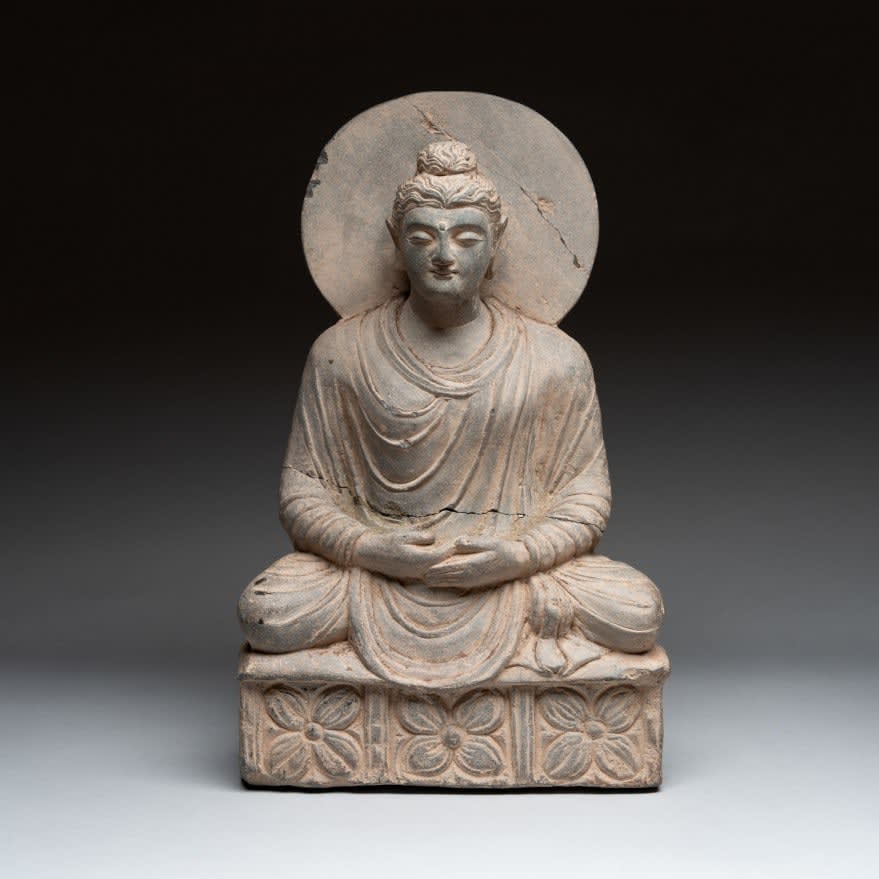Gandhara Grey Schist Sculpture of Buddha, 1st Century CE - 2nd Century CE
Grey Schist
height 33 cm
height 13 in
height 13 in
CB.1058
Further images
Gandhara was an ancient state, a mahajanapada, in the Peshawar basin in the northwest portion of the ancient Indian subcontinent, present-day Afghanistan and Pakistan. The center of the region was...
Gandhara was an ancient state, a mahajanapada, in the Peshawar basin in the northwest portion of the ancient Indian subcontinent, present-day Afghanistan and Pakistan. The center of the region was at the confluence of the Kabul and Swat rivers, bounded by the Sulaiman Mountains on the west and the Indus River on the east. This being the core area of Gandhara, the cultural influence of “Greater Gandhara” extended across the Indus river to the Taxila region and westwards into the Kabul and Bamiyan valleys in Afghanistan, and northwards up to the Karakoram range. Gandhara was one of sixteen mahajanapadas (large conglomerations of urban and rural areas) of ancient India mentioned in Buddhist sources such as Anguttara Nikaya. During the Achaemenid period and Hellenistic period, its capital city was Pushkalavati (modern Charsadda). Later the capital city was moved to Peshawar by the Kushan emperor Kanishka the Great in about 127 CE. Gandhara was conquered by the Achaemenid Empire in the 6th century BC. Conquered by Alexander the Great in 327 BC, it subsequently became part of the Maurya Empire and then the Indo-Greek Kingdom. The region was a major center for Greco-Buddhism under the Indo- Greeks and Gandharan Buddhism under later dynasties. It was also a central location for the spread of Buddhism to Central Asia and East Asia. Famed for its local tradition of Gandhara (Greco-Buddhist) art, Gandhara attained its height from the 1st century to the 5th century under the Kushan Empire. Gandhara “flourished at the crossroads of Asia,” connecting trade routes and absorbing cultural influences from diverse civilizations. Buddhism thrived until 8th or 9th centuries, when Islam first began to gain sway in the region. Pockets of Buddhism persisted in Pakistan’s Swat valley until the 11th century. The Persian term Shahi is used by historian Al- Biruni to refer to the ruling dynasty that took over from the Kabul Shahi and ruled the region during the period prior to Muslim conquests of the 10th and 11th centuries. After it was conquered by Mahmud of Ghazni in 1001 CE, the name Gandhara disappeared. During the Muslim period, the area was administered from Lahore or from Kabul. During Mughal times, it was an independent district which included the Kabul province. (CB.1058)





